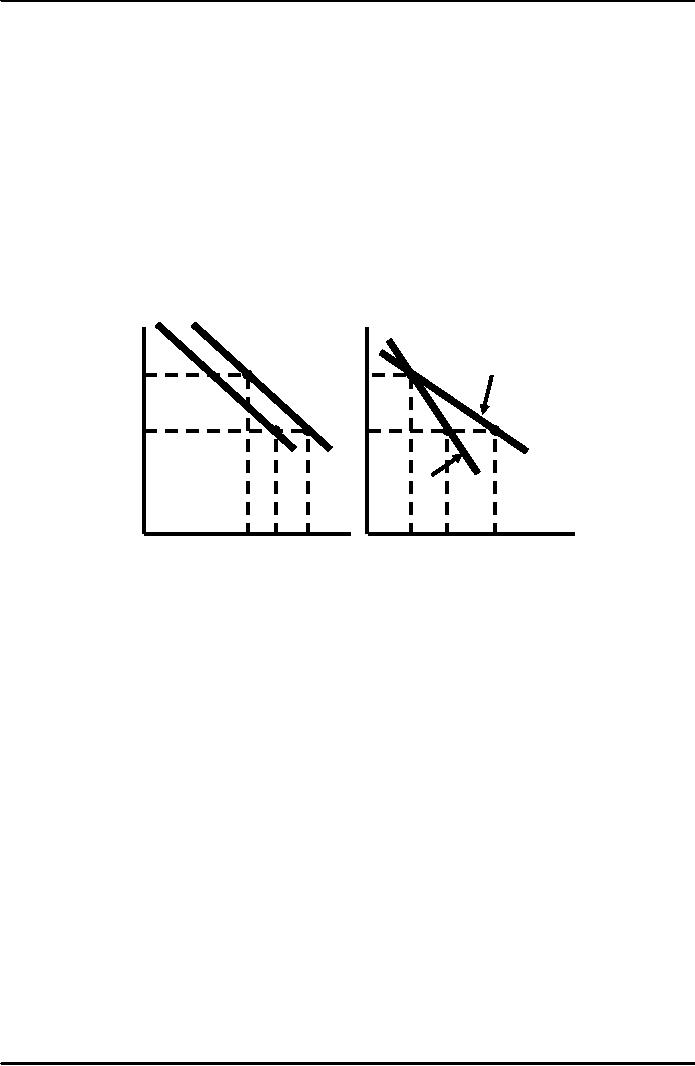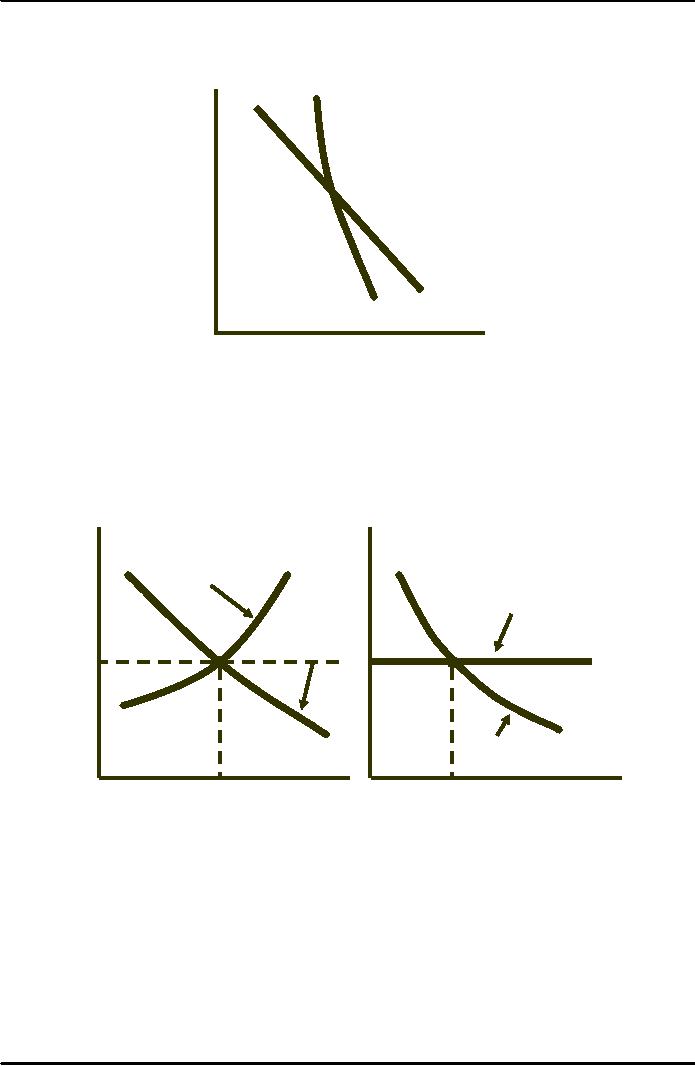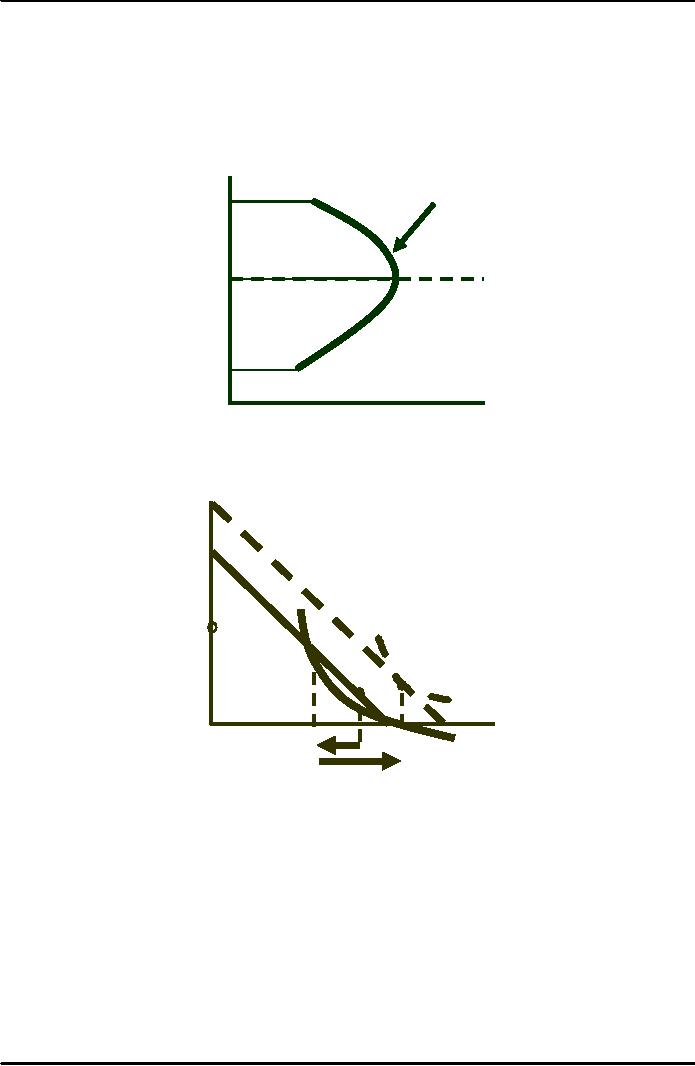 |
Competitive Factor Markets:The Demand for Jet Fuel |
| << COMPETITIVE FACTOR MARKETS:Marginal Revenue Product |
| Equilibrium in a Competitive Factor Market:Labor Market Equilibrium >> |

Microeconomics
ECO402
VU
Lesson
43
Competitive
Factor Markets
Industry
Demand for Labor
Assume
that all firms respond to a
lower wage
�
All
firms would hire more
workers.
�
Market
supply would
increase.
�
The
market price will
fall.
�
The
quantity demanded for labor
by the firm will be
smaller.
The
Industry Demand for
Labor
Wage
Firm
Industry
Wage
($
per
Horizontal
sum if
($
per
hour)
product
price
hour)
unchanged
15
15
10
10
Industry
MRPL
DL
MRPL
Demand
5
5
DL
Curve
0
100
12
L0
L
L
50
150
Labor
Labor0
(worker-hours)
(worker-hours)
Question
How would a
change to a non-competitive market
impact the derivation of the
market
demand
for labor?
The
Demand for Jet
Fuel
Observations
Jet fuel is a
factor (input) cost
Cost of jet
fuel
�
1971--Jet
fuel cost equaled 12.4% of
total operating cost
�
1980--Jet
fuel cost equaled 30.0% of
total operating cost
�
1990's--Jet
fuel cost equaled 15.0% of
total operating cost
The demand
for jet fuel impacts
the airlines and refineries
alike
The short-run
price elasticity of demand
for jet-fuel is very
inelastic
Question
How would
the long-run price
elasticity of demand compare to
the short-run?
196

Microeconomics
ECO402
VU
The
Short- and
Long-Run
Price
MRPSR
MRPLR
Quantity
of Jet Fuel
The
Supply of Inputs to a
Firm
Determining how
much of an input to
purchase
�
Assume a
perfectly competitive factor
market
A
Firm's Input Supply in a
Competitive Factor
Market
Observations
Price
Price
1)
The firm is a price taker at
$10.
($
per
($
per
2)
S = AE = ME = $10
yard)
yard)
3)
ME = MRP @ 50 units
Market
Supply
S
of
fabric
Supply
of
Fabric
Facing
Market
Demand
10
10
ME
= AE
MRP
D
Demand
for
Fabric
Yards
of
Yards
of
100
50
Fabric
(thousands)
Fabric
(thousands)
The
Market Supply of
Inputs
The market
supply for physical inputs
is upward sloping
�
Examples:
jet
fuel, fabric, steel
The market
supply for labor may be
upward sloping and backward
bending
The
Supply of Labor
The choice to
supply labor is based on
utility maximization
Leisure
competes with labor for
utility
Wage rate
measures the price of
leisure
Higher wage
rate causes the price of
leisure to increase
197

Microeconomics
ECO402
VU
Higher wages
encourage workers to substitute
work for leisure (i.e.
the substitution
effect)
Higher
wages allow the worker to
purchase more goods,
including leisure which
reduces
work
hours (i.e. the income
effect)
If
the income effect exceeds
the substitution effect the
supply curve is backward
bending
Backward-Bending
Supply of Labor
Supply
of Labor
Wage
($
per
hour)
Income
Effect >
Substitution
Effect
Income
Effect <
Substitution
Effect
Hours
of Work per Day
Substitution
and Income Effects of a Wage
Increase
Worker
chooses point A:
Income
480
($
per
�16 hours leisure, 8 hour
work
day)
w
= $20
Suppose
wages increase to $20
Increase
wage to $20 worker
P
chooses:
240
w
= $10
20
hour leisure, 4 hours
work
C
income
= $80
B
A
Q
0
8
12
20
24
Hours
of Leisure
16ubstitution effect
S
Income
effect
198
Table of Contents:
- ECONOMICS:Themes of Microeconomics, Theories and Models
- Economics: Another Perspective, Factors of Production
- REAL VERSUS NOMINAL PRICES:SUPPLY AND DEMAND, The Demand Curve
- Changes in Market Equilibrium:Market for College Education
- Elasticities of supply and demand:The Demand for Gasoline
- Consumer Behavior:Consumer Preferences, Indifference curves
- CONSUMER PREFERENCES:Budget Constraints, Consumer Choice
- Note it is repeated:Consumer Preferences, Revealed Preferences
- MARGINAL UTILITY AND CONSUMER CHOICE:COST-OF-LIVING INDEXES
- Review of Consumer Equilibrium:INDIVIDUAL DEMAND, An Inferior Good
- Income & Substitution Effects:Determining the Market Demand Curve
- The Aggregate Demand For Wheat:NETWORK EXTERNALITIES
- Describing Risk:Unequal Probability Outcomes
- PREFERENCES TOWARD RISK:Risk Premium, Indifference Curve
- PREFERENCES TOWARD RISK:Reducing Risk, The Demand for Risky Assets
- The Technology of Production:Production Function for Food
- Production with Two Variable Inputs:Returns to Scale
- Measuring Cost: Which Costs Matter?:Cost in the Short Run
- A Firm’s Short-Run Costs ($):The Effect of Effluent Fees on Firms’ Input Choices
- Cost in the Long Run:Long-Run Cost with Economies & Diseconomies of Scale
- Production with Two Outputs--Economies of Scope:Cubic Cost Function
- Perfectly Competitive Markets:Choosing Output in Short Run
- A Competitive Firm Incurring Losses:Industry Supply in Short Run
- Elasticity of Market Supply:Producer Surplus for a Market
- Elasticity of Market Supply:Long-Run Competitive Equilibrium
- Elasticity of Market Supply:The Industry’s Long-Run Supply Curve
- Elasticity of Market Supply:Welfare loss if price is held below market-clearing level
- Price Supports:Supply Restrictions, Import Quotas and Tariffs
- The Sugar Quota:The Impact of a Tax or Subsidy, Subsidy
- Perfect Competition:Total, Marginal, and Average Revenue
- Perfect Competition:Effect of Excise Tax on Monopolist
- Monopoly:Elasticity of Demand and Price Markup, Sources of Monopoly Power
- The Social Costs of Monopoly Power:Price Regulation, Monopsony
- Monopsony Power:Pricing With Market Power, Capturing Consumer Surplus
- Monopsony Power:THE ECONOMICS OF COUPONS AND REBATES
- Airline Fares:Elasticities of Demand for Air Travel, The Two-Part Tariff
- Bundling:Consumption Decisions When Products are Bundled
- Bundling:Mixed Versus Pure Bundling, Effects of Advertising
- MONOPOLISTIC COMPETITION:Monopolistic Competition in the Market for Colas and Coffee
- OLIGOPOLY:Duopoly Example, Price Competition
- Competition Versus Collusion:The Prisoners’ Dilemma, Implications of the Prisoners
- COMPETITIVE FACTOR MARKETS:Marginal Revenue Product
- Competitive Factor Markets:The Demand for Jet Fuel
- Equilibrium in a Competitive Factor Market:Labor Market Equilibrium
- Factor Markets with Monopoly Power:Monopoly Power of Sellers of Labor